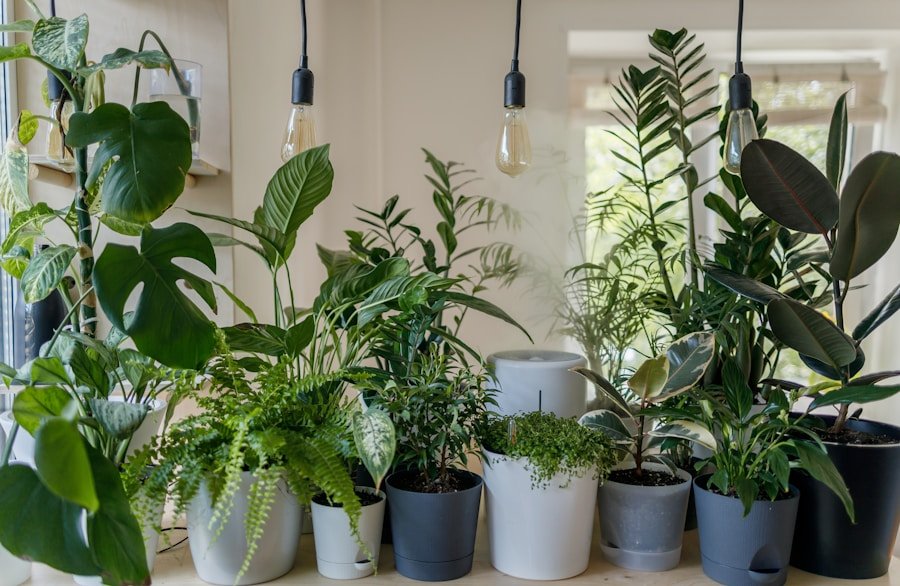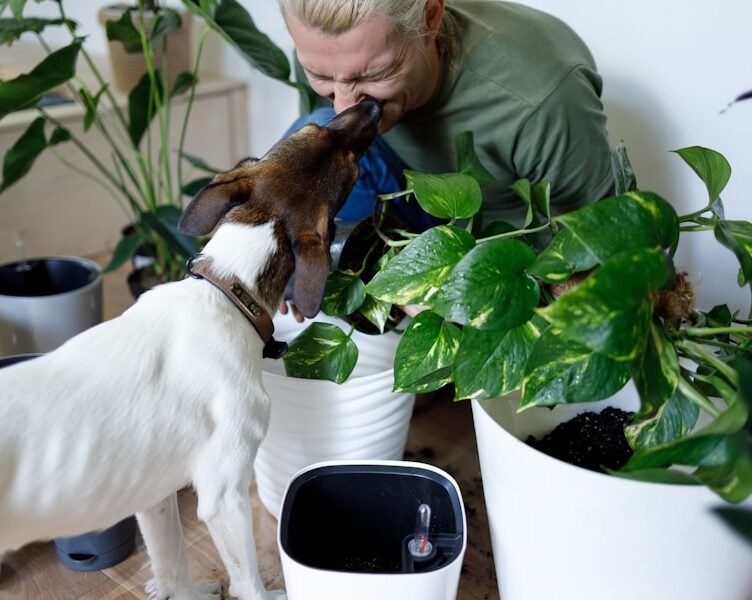When it comes to pet safety, it is crucial to be aware of the common household plants that can be toxic to their health. Lilies, aloe vera, philodendron, and jade plants are some of the most common toxic houseplants that can cause a range of symptoms in pets, including vomiting, diarrhea, and in severe cases, kidney failure or cardiac arrhythmias. It is essential to familiarize yourself with these toxic plants and ensure they are not present in your home, especially if you have curious pets that may be prone to ingesting plants.
In addition to these plants, other common household plants can also be toxic to pets. Sago palm, azalea, and oleander are examples of plants that can cause gastrointestinal upset, drooling, and in severe cases, seizures or even death. It is vital to research the safety of any houseplants before bringing them into your home to ensure they are safe for your pets.
If you are unsure about the safety of a particular plant, it is best to exercise caution and avoid introducing it into your home.
Key Takeaways
- Identify and avoid poisonous houseplants to pet-proof your home and keep your pets safe.
- Common toxic houseplants to avoid include lilies, aloe vera, and philodendron.
- Signs of poisoning in pets may include vomiting, diarrhea, and lethargy.
- Choose pet-safe alternatives to popular houseplants such as spider plants, Boston ferns, and African violets.
- Pet-proof your home by keeping plants out of reach, using pet-friendly fertilizers, and creating a pet-friendly indoor garden.
Signs of Poisoning in Pets
Common Symptoms of Plant Poisoning
As a pet owner, it’s crucial to be aware of the signs of poisoning in your pets, especially if you have houseplants in your home. Some common signs of plant poisoning in pets include vomiting, diarrhea, drooling, and lethargy. In more severe cases, pets may experience difficulty breathing, seizures, or collapse.
Seeking Immediate Veterinary Care
If you suspect that your pet has ingested a toxic plant, it’s essential to seek veterinary care immediately. The sooner your pet receives treatment, the better their chances of recovery. In some cases, the signs of plant poisoning in pets may not be immediately obvious.
Long-term Consequences and Vigilance
Some plants can cause kidney damage or liver failure, which may not manifest as immediate symptoms. It’s vital to be vigilant and keep an eye on your pet’s behavior, especially if you have houseplants in your home. If you notice any changes in your pet’s behavior or health, it’s crucial to consult with a veterinarian as soon as possible.
Pet-Safe Alternatives to Popular Houseplants
If you’re a pet owner who loves houseplants, you may be wondering if there are any pet-safe alternatives to the common toxic houseplants mentioned above. The good news is that there are many beautiful and pet-friendly houseplants that you can safely bring into your home. Some pet-safe houseplants include spider plants, Boston ferns, and African violets.
These plants are not only safe for pets, but they also add beauty and greenery to your home without posing a threat to your furry friends. In addition to the plants mentioned above, there are many other pet-safe houseplants that you can consider adding to your indoor garden. Some other options include air plants, bamboo palms, and Christmas cacti.
These plants are not only safe for pets, but they are also relatively easy to care for, making them a great choice for pet owners who want to add some greenery to their home without putting their pets at risk.
Tips for Pet-Proofing Your Home
| Houseplant | Toxicity Level | Symptoms |
|---|---|---|
| Lilies | High | Vomiting, lethargy, kidney failure |
| Pothos | Mild | Irritation of mouth and stomach |
| Dieffenbachia | Moderate | Swelling, difficulty swallowing |
| Philodendron | Mild | Irritation of mouth and stomach |
In addition to being mindful of the types of houseplants you bring into your home, there are several other steps you can take to pet-proof your living space and keep your furry friends safe. One important step is to ensure that any potentially toxic substances, such as cleaning products or medications, are stored securely out of reach of pets. It’s also important to be mindful of any potential hazards in your home, such as electrical cords or small objects that could be swallowed by pets.
Another important aspect of pet-proofing your home is to be mindful of the types of decorations and furnishings you have in your home. For example, some pets may be prone to chewing on houseplants or other decorative items, so it’s important to choose items that are safe for pets or keep them out of reach. Additionally, it’s important to be mindful of any potential escape routes in your home, especially if you have outdoor cats or dogs.
Ensuring that windows and doors are secure can help prevent pets from getting into potentially dangerous situations.
What to Do if Your Pet Ingests a Poisonous Plant
If you suspect that your pet has ingested a poisonous plant, it’s important to act quickly and seek veterinary care as soon as possible. In some cases, inducing vomiting may be recommended if the ingestion has occurred within a certain timeframe. However, it’s important to consult with a veterinarian before attempting to induce vomiting, as this may not be appropriate in all situations.
In addition to seeking veterinary care, it’s important to try to identify the plant that your pet has ingested. If possible, take a sample of the plant with you to the veterinarian so that they can accurately diagnose and treat your pet. It’s also important to be honest with your veterinarian about any potential exposures or ingestions, as this information can help them provide the best possible care for your pet.
How to Create a Pet-Friendly Indoor Garden
Choose Pet-Safe Houseplants
As a pet owner, it’s essential to select houseplants that are non-toxic to your furry friends. Fortunately, there are many beautiful and pet-friendly houseplants that you can safely bring into your home without posing a threat to your pets.
Consider the Placement of Your Indoor Garden
In addition to choosing pet-safe houseplants, it’s crucial to think about where you place your indoor garden. For instance, placing plants on high shelves or in hanging baskets can help keep them out of reach of pets who may be prone to nibbling on leaves or flowers.
Be Mindful of Potential Hazards
It’s also important to be aware of any potential hazards in your indoor garden, such as sharp objects or small items that could be swallowed by pets. By taking these precautions, you can create a safe and enjoyable indoor garden for both you and your pets.
Resources for Identifying Safe and Unsafe Plants for Pets
If you’re unsure about the safety of a particular plant for your pets, there are several resources available that can help you identify safe and unsafe plants for pets. One valuable resource is the ASPCA’s website, which provides a comprehensive list of toxic and non-toxic plants for cats and dogs. This resource can help you make informed decisions about the types of plants you bring into your home and ensure that they are safe for your furry friends.
In addition to the ASPCA’s website, there are many other resources available online that can help you identify safe and unsafe plants for pets. Some other valuable resources include plant identification apps and websites that provide information about the toxicity of various plants. These resources can help you make informed decisions about the types of plants you bring into your home and ensure that they are safe for your pets.
In conclusion, it’s important for pet owners to be aware of the common toxic houseplants that can pose a threat to their pets’ health. By familiarizing yourself with these toxic plants and ensuring that they are not present in your home, you can help keep your furry friends safe from potential harm. Additionally, by being mindful of the signs of poisoning in pets and taking steps to pet-proof your home, you can create a safe and healthy living environment for your pets.
Finally, by choosing pet-safe houseplants and being mindful of the placement of your indoor garden, you can create a beautiful and pet-friendly space that is safe for your furry friends to enjoy. With these tips in mind, you can create a safe and healthy living environment for both you and your beloved pets.
FAQs
What are some common poisonous houseplants to avoid if you have pets?
Some common poisonous houseplants to avoid if you have pets include lilies, aloe vera, philodendron, pothos, and snake plants. These plants can be toxic to cats and dogs if ingested.
How can I identify if a houseplant is poisonous to pets?
You can identify if a houseplant is poisonous to pets by checking online resources, such as the ASPCA’s list of toxic and non-toxic plants, or by consulting with a veterinarian. Look for any warnings or indications of toxicity associated with the specific plant.
What are some pet-friendly houseplants that are safe to have in a home with pets?
Some pet-friendly houseplants that are safe to have in a home with pets include spider plants, Boston ferns, African violets, and air plants. These plants are non-toxic to cats and dogs and can be a safe alternative to poisonous houseplants.
How can I pet-proof my home to avoid exposure to poisonous houseplants?
To pet-proof your home and avoid exposure to poisonous houseplants, you can place toxic plants out of reach of pets, consider hanging plants or placing them in high places, and provide alternative safe plants for your pets to interact with. It’s also important to educate yourself about the potential dangers of specific houseplants and take necessary precautions.
What should I do if I suspect my pet has ingested a poisonous houseplant?
If you suspect your pet has ingested a poisonous houseplant, you should immediately contact your veterinarian or a pet poison control hotline for guidance. It’s important to act quickly and seek professional help to ensure the safety and well-being of your pet.






3 Comments